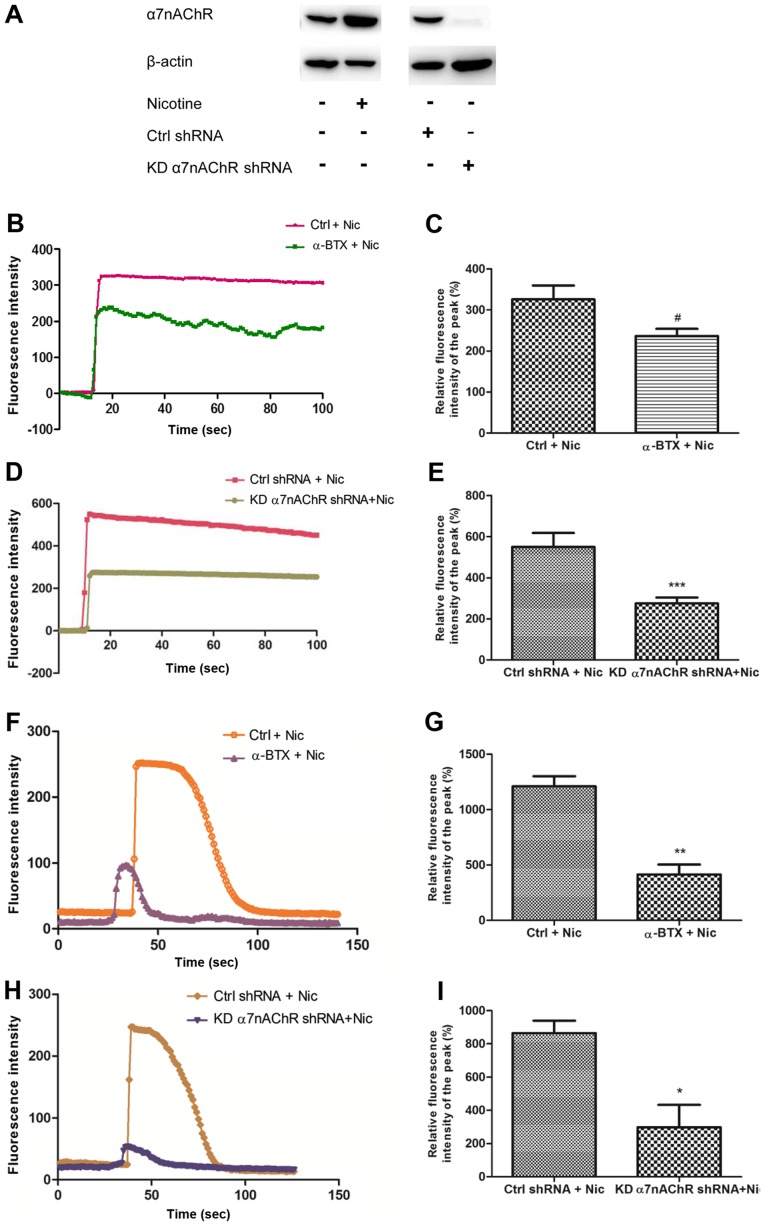Figure 1.
H1299 cells contain functional α7nAChRs, of which the calcium influx is responsive to stimulation with nicotine or α-BTX. (A) Protein expression of α7nAChR in H1299 cells was detected by western blotting under different conditions. Nicotine could induce increased expression of α7nAChR. α7nAChR was effectively knocked down by α7nAChR shRNA in H1299 cells. (B-I) Calcium influxes were detected using the fluorescent marker Fluo-4. (B and D) Nicotine (1 mM) was added to various groups of H1299 cells; nicotine treatment was found to induce an immediate increase in calcium influx in the control cells, which was abrogated by pre-treatment with 1 µM α-BTX or α7nAChR knockdown. (F and H) Nicotine (30 µM) could still induce a spontaneous increase in calcium influx in H1299 cells or in Ctrl-shRNA cells, and these effects could be abrogated by pre-treatment with 1 µM α-BTX 30 min prior to nicotine stimulation or by α7nAChR knockdown. (C, E, G and I) Fluorescence intensity curves of the peak calcium influx in different groups. The fluorescence intensity of calcium was recorded as the ratio of F and F0, with F representing the peak fluorescence intensity excited by cellular calcium influx when stimulated by nicotine, and F0 representing the fluorescence intensity of basic cellular calcium influx. The mean relative fluorescence of the peak was shown as [(F-F0)/F0] × 100%. The data are presented as the mean ± SEM. *P<0.05 and **P<0.01, compared with the control. #P<0.05 and ##P<0.01, compared with the nicotine treatment group. α7nAChR; α7 nicotinic acetylcholine receptor.

